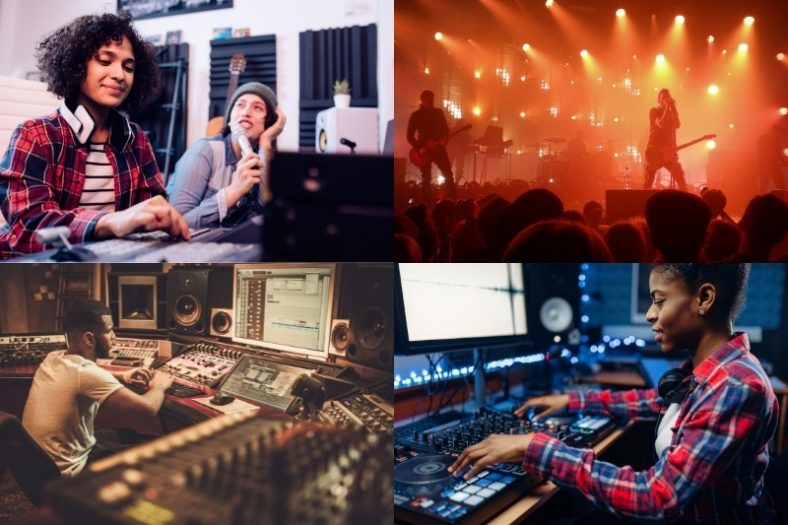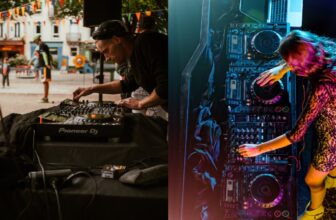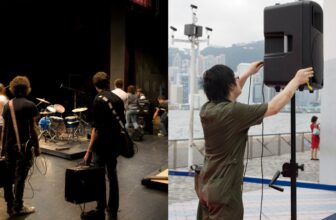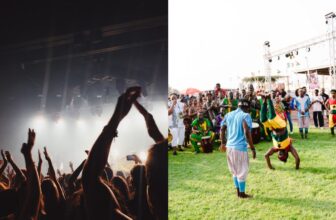Gender Inequality in the Music Industry (2024) – Statistics and Thoughts

The music industry continues to be a male-dominated industry. To the average listener, this may not seem to be the case, as they may see lots of female artists at the top of the charts. However, when you look at the data, you’ll see that women are seriously being left out of the equation across the industry.
Not only is the music industry dominated by male performers, the number ratio of female artists has been known to drop over the years. Women represent less than 1/3 of artists in the music world today, with 12.6% of songwriters and fewer than 3% of producers that have been on the charts, between the years of 2012 and 2020.
These are really discouraging numbers for any female artists out there. Even those who are starting out, knowing the statistics of male versus female artists is really a letdown. The good thing is that there are a lot of powerful female artists right now that are slowly paving the way for lots of newcomers and show a lot of potential to change these numbers in the future.
Contents
The Numbers Across The Music Industry
With a study from 2012 to 2020 by USC Annenberg, examining 900 popular songs within those years, the numbers show most female artists are still below 30%, with the most ever reaching 28.1%. Male artists are above 70% all the time. 30% is still a pretty low number considering this is the whole general idea of artists grouped together.
In this percentage, we have female artists, female songwriters, and producers. When it comes to artists, only 21.6% are female artists, as songwriters that number is even lower, coming in at 12.6%, and the lowest one being female producers with only 2.6% out of all music producers in the world.
According to Rolling Stone, out of the 13 major record labels in the United States, only Epic Records, (Sony subsidiary), is headed up by a woman (Sylvia Rhone).
Artists
During the study across these 900 songs, female artists within these eight years have always been below 30%. With the highest percentage being in 2016 with 28.1% and the lowest one being the following year, coming in at 16.8%. Taking an overall view on the subject we can conclude that the ratio of men to women, in the world of artists, is 3.6:1.
The average person can’t possibly know these numbers. One can think “Well, there are female artists all over the place”, but we’re not taking the whole general picture in mind here. These are just the numbers for the 900 pop songs that have been on the charts for the past eight years.
Considering that fact, this is an extremely low percentage, as female artists have way less populated the charts, coming to the conclusion that there aren’t as many female artists as there are male artists within the music industry.
Songwriters
When it comes to female songwriters, this number drops significantly within those eight years. From 2012 to 2020, the highest percentage of female songwriters was in 2019 with 14.4%, and the lowest one was in 2012, coming in at 11%.
This is something that still goes behind the scenes as the general public doesn’t really know who’s writing these songs and can have different opinions on that subject.
While many people overlook this fact, the numbers are clear. And this percentage is really low compared to male songwriters, which within those eight years has been at an all-time high of 89% in 2012 with the lowest one being in 2019 with 85.6%.
Producers
As far as female music producers spanning over those eight years, the numbers are definitely not something to be proud of. From 2012 to 2020, female producers have come in with the highest percentage being in 2019 with 5% of all music producers in the world, with their lowest being the 2015 and 2017 with 1.8%.
When it comes to producers, these numbers are truly disgraceful, with an average of 2.6% of female producers out of all music producers in the music industry. Male producers, on the other hand, were at an all-time high in 2015 and 2017 with 98.2% and the lowest reaching 95% in 2019.
It’s safe to say that the role of music producer for women is close to none when looking at these numbers. Now again, this is something that the general public can’t possibly know. We’re looking at the music industry as a whole, but these numbers are really eye-opening and clearly state a message that female artists, in general, are highly undervalued and underrepresented.
Numbers Regarding Artist Race/Ethnicity
When it comes to the subject of the race or ethnicity of an artist, looking at the numbers of 2020, 41% are white and 59% are from a different race or ethnicity. This was considered as a peak year for underrepresented artists of different races and ethnicity.
Seeing as though, compared to the numbers of 2012, the percentage has increased 20.6% over those past eight years. Regarding female and male artists that fall into the category of underrepresented artists, these numbers have increased slightly within those eight years.
Since the charts have been occupied predominantly by artists of different races or ethnicity, with the likes of Drake, Nicki Minaj, and Rihanna outpacing all the other top white artists on the charts. When on the subject of underrepresented artists, this field has shown many improvements over the past couple of years and it looks like it will keep rising in the years to come.
Grammy Awards From 2013 to 2021
The Grammys also take part in gender inequality. Over those nine years, the most notable awards in the music world were ‘Record Of The Year’, ‘Album Of The Year’, ‘Song of the Year’, ‘Best New Artist’, and ‘Producer Of The Year’.
With a total number of 1359 people nominated for a Grammy Award in between those nine years, the numbers show that 13.4% of nominees were female and 86.6% were male. That is a ratio of 6.5 men nominated for 1 woman nominee.
By looking at the nominations by gender from 2013 to 2021, women are at an all-time low in 2017 with 6.4%, and men are at an all-time high with 93.6% of all nominations. Out of those five categories, women also score lower percentages than men regarding nominations within the categories.
Record Of The Year
Regarding the category of ‘Record Of The Year’ spanning those eight years, believe it or not, women have come in at an all-time low in 2018 with 0% nominated for a Grammy Award, with the highest one being in 2021 with 23.7%.
Album Of The Year
Regarding ‘Album Of The Year’, the lowest that female nominees came in was in 2013 with 2% and their highest being in 2021 with 18.6%.
Song Of The Year
The category of ‘Song Of The Year’ has been shown to be a good category for female artists, with their lowest being in 2018 with 12% and their highest being in 2021 with 44.8%.
Best New Artist
The category of ‘Best New Artist’ is also a favorable category for female artists. The lowest number was in 2013 and 14 with 16.7% and the highest one was in 2021 with 75%.
Producer Of The Year
Regarding ‘Producer Of The Year’ within those eight years, female producers were only nominated in 2019 with 20% occupying those nominations, and the rest of those years, they had 0%.
Gender Pay Gap
There’s also a gender pay gap in the music industry regarding male and female artists. This is regarded as even worse than just the population of female artists in the music industry.
Statistics published by ‘Music Business Worldwide‘ shed some light on the matter of the pay gap in the music industry. In the United Kingdom, the statistics show that female artists under Universal, Sony, and Warner’s UK Companies make almost 30% less money than male artists within those same companies.
With an average of making $0.70 to every male $1. The bigger letdown was finding out that female artists earn 88% less in their bonuses compared to male artists.
Gender Bias
“A whopping 64% of respondents named sexual harassment and objectification as a major challenge women face in the industry“, according to Forbes.
“84% of women felt that they had been treated differently due to their gender”, according to Berklee Institute for Creative Entrepreneurship.
Conclusion
Looking at these statistics, it’s no secret that gender inequality is still a big thing in the music industry. Looking at the numbers from the past years, we can safely say that women are still far off from being seen as equal to men within the music industry. On the bright side, there are currently really powerful female artists that are clearing the way for all newcomers in the future and hopefully this might change things.
The bottom line is that they are underappreciated in almost every aspect of the music industry today. Without plenty of changes being implemented, female artists may never see the light of day if this continues as it has in the past. Here’s to hoping that one day there will be gender equality within the music industry.





